Since 2021
Long-term research project
Stadträume im Ungewissen entwickeln.
Schaukelprozesse, Beziehungen und Krisenkompetenzen in der Stadtentwicklung
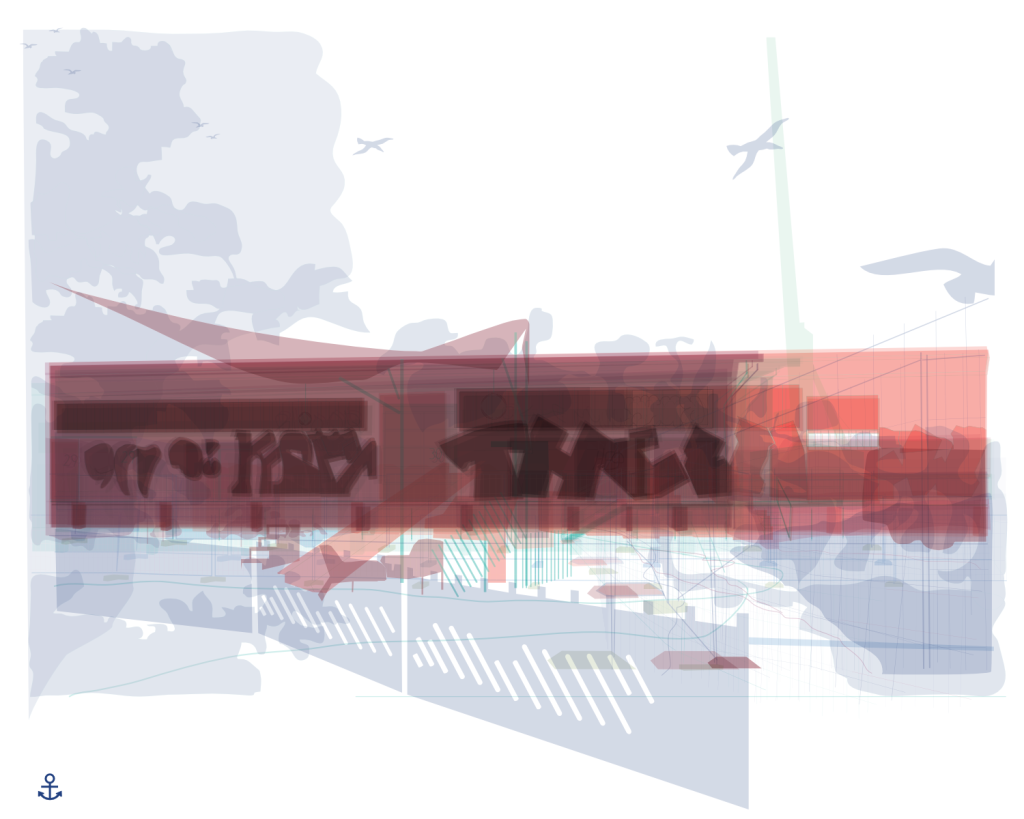
Oktober 2023
Angst. Ekel. Scheitern. Ein Austausch zu den blinden Flecken der Nachhaltigkeit (Urbanophil Verlag)
https://angstekelscheitern.de/e-book/
https://urbanophil.net/verlag/angst-ekel-scheitern-austausch-zu-den-blinden-flecken-der-nachhaltigkeit/



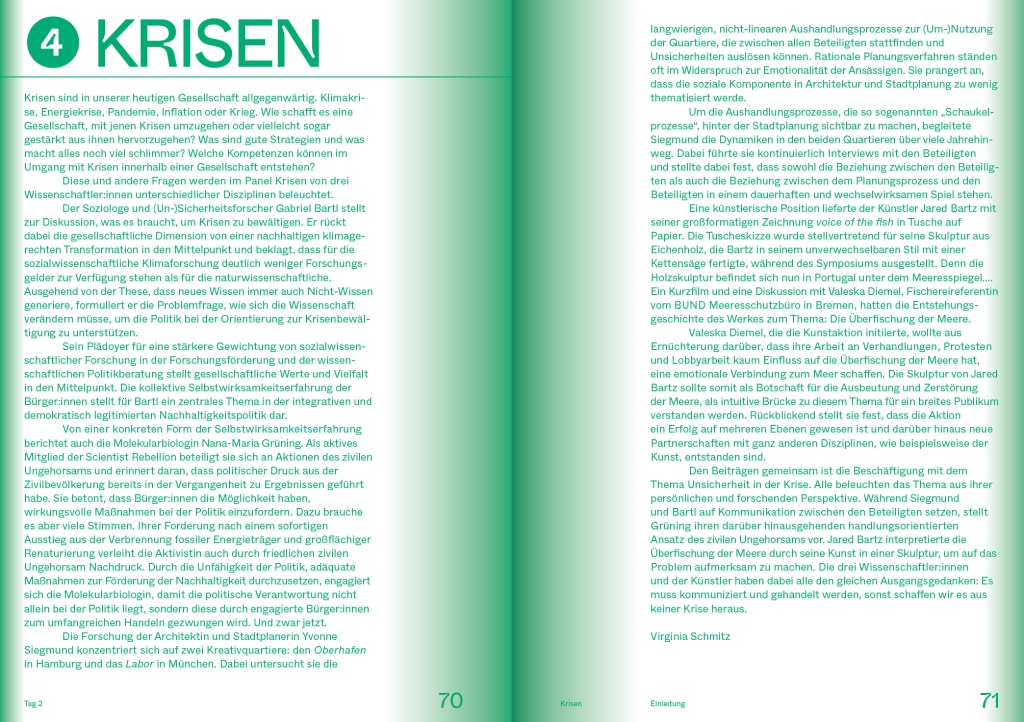
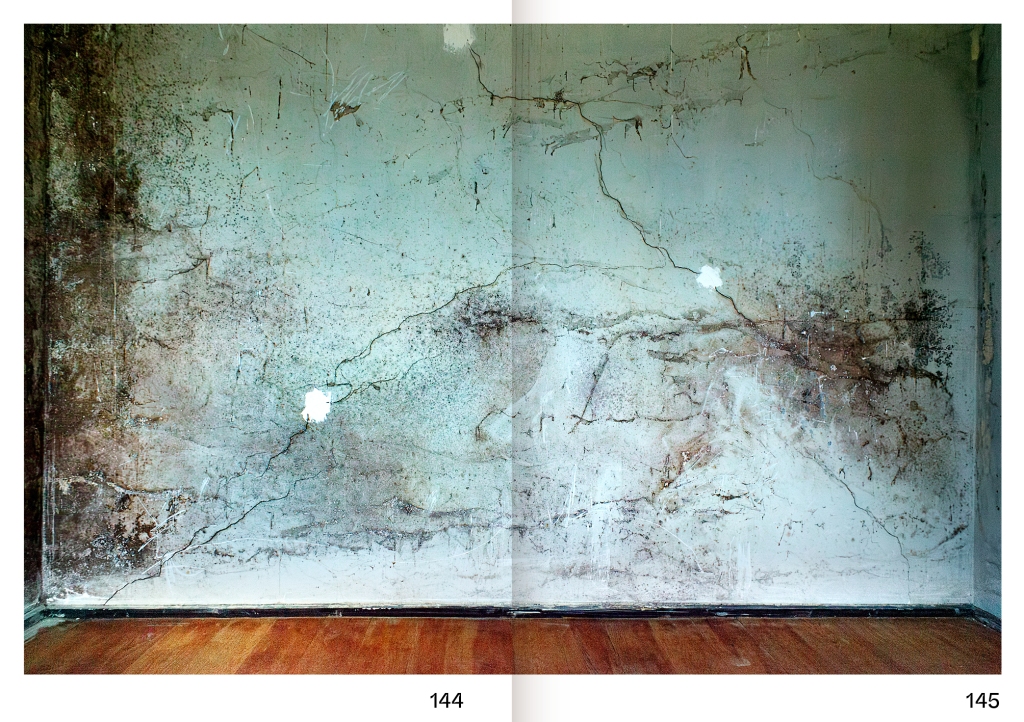
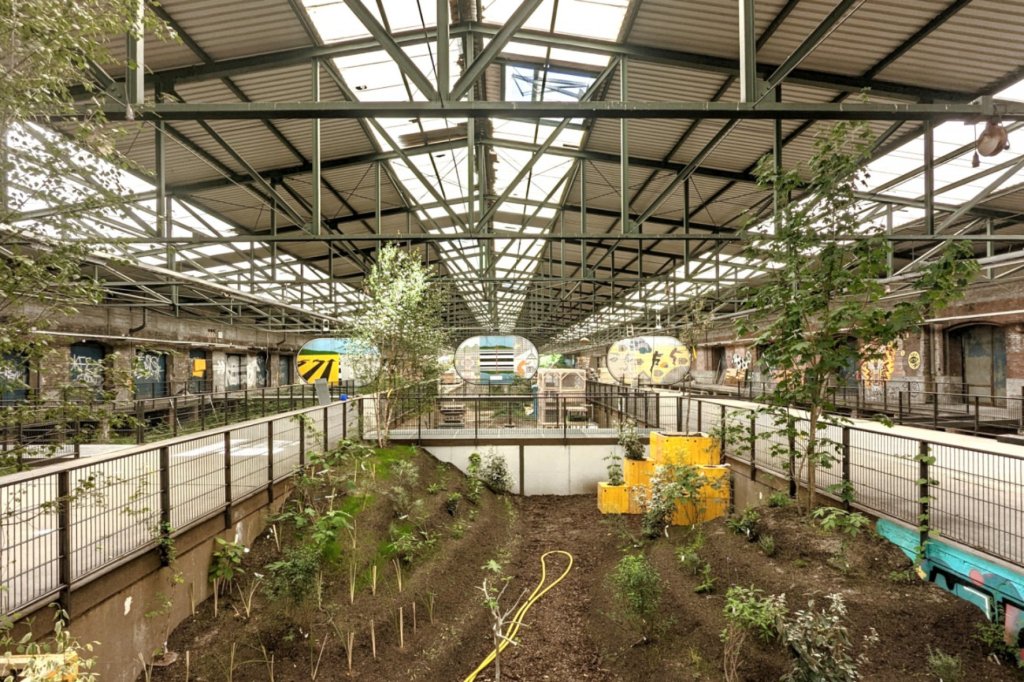


Design: Levin Stadler, http://levinstadler.de
Fotos: Rainer Binz, Schimmel No. 5, Fotografie digital als Fine-Art-Inkjet (225 x 150cm), 2021.
asdfg Architekten: Gleishalle Oberhafen Hamburg, im Hintergrund Bilder von Werner Nöfer und Dieter Glasmacher, Foto: asdfg Architekten
Lukasz Lendzinski, umschichten kollektiv: Pavillon für den Hamburger Architektur Sommer, Fensterprofile /Holzausschnitte, 10x10x6m, Juni 2023, Magellan-Terrassen, HafenCity Hamburg.
Yvonne Siegmund: Eindrücke aus dem Labor im Münchner Kreativquartier
Nahezu inflationär werden mittlerweile sämtliche Produkte, Bereiche und Maßnahmen mit dem Begriff Nachhaltigkeit gelabelt. Damit sind viele Versprechungen verbunden und wir fühlen uns gut, wenn wir nachhaltig konsumieren. Mitunter belügen wir uns in dieser Hinsicht oder wir werden belogen. Wir als Gesellschaft und als Einzelne:r handeln nicht immer konsequent nachhaltig, sondern auch egoistisch, widersprüchlich, kurzsichtig oder wir ignorieren komplexe Zusammenhänge. Und mal ehrlich, wer verzichtet schon gerne? Weil die dunklen Seiten im Nachhaltigkeitskontext selten offen thematisiert werden, gaben wir im Mai 2023 drei Tage lang dem Scheitern und den Illusionen, den Krisen und Ängsten eine Bühne. Auf unserem Symposium Angst.Ekel.Scheitern. stellten wir den hellen Versprechungen die blinden Flecken der Nachhaltigkeit zur Seite. Personen aus der Wissenschaft, der (künstlerischen) Praxis und der Zivilgesellschaft legten sie gemeinsam offen. Diese Publikation bildet diesen Prozess des Sichtbarmachens ab. In etwa 30 Beiträgen, u.a. aus der Architektur und Stadtentwicklung, der Kunst und der Filmbranche, des Transformationsdesigns und der Informatik, der Soziologie und Philosophie, der Praxis des Material-Verwaltens und des zivilen Ungehorsams werden Hürden und Hemmnisse, Lücken und Abhängigkeiten im Nachhaltigkeitskontext beschrieben, gezeichnet und besprochen.
Die PDF-Datei (ca. 15 MB) steht auf unserer Website https://angstekelscheitern.de/e-book/ und bei Urbanophil https://urbanophil.net/verlag/angst-ekel-scheitern-austausch-zu-den-blinden-flecken-der-nachhaltigkeit/ zum Download zur Verfügung.
25. – 27. Mai 2023
Angst. Ekel. Scheitern. Ein Symposium zu den blinden Flecken der Nachhaltigkeit
angstekelscheitern.de
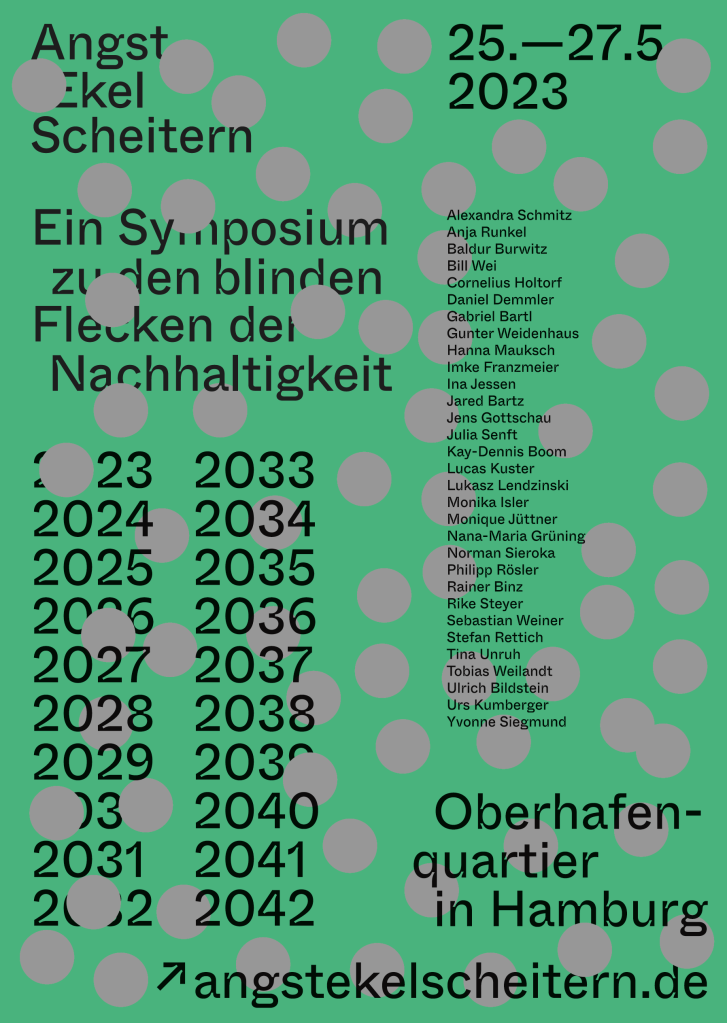
Design: http://levinstadler.de
In einer multidisziplinären Veranstaltung vom 25. bis 27. Mai 2023 nehmen wir in Diskussionen, Interaktionen und künstlerischen Interventionen die blinden Flecken von Nachhaltigkeit multiperspektivisch in den Blick. Unsere Veranstaltung wird also keine Bühne für Erfolgsgeschichten. Vielmehr beleuchtet sie die blinden Flecken von Nachhaltigkeit, die sich eng verflochten in politischen, wissenschaftlichen, sozioökonomischen und ökologischen (Alltags-)Kontexten zeigen.
Im Rampenlicht stehen Widersprüche, Hindernisse und Ängste im Zusammenhang mit dem Begriff Nachhaltigkeit, denen wir uns diskursiv und spielerisch widmen. Wir erhalten Einblicke in die nicht nachhaltigen Logiken inter- und transdisziplinärer Wissenschaftsbetriebe, indem Transformationsdesigner:innen, Sozialökonom:innen, Stadtplanende- und forschende, Architektur-, Kunst- und Filmschaffende, Archäolog:innen, Materialverwalter:innen, Psycholog:innen u.v.a. ihre Perspektiven teilen und Inputs zur Ambivalenz nachhaltigen Handelns und der Widersprüchlichkeit der jeweiligen Begriffs(de)konstruktion geben. So spricht ein Philosoph über Flugscham und konsumspezifischen Ekel. Ein Informatiker referiert über die Ambivalenz von Kryptowährungen. Und wir sprechen über den Zusammenbruch des Weltklimas – um nur einige Themen zu nennen.
Es erwarten uns drei spannungsvolle- und geladene Tage des Austauschs, des Lernens und des Netzwerkens im Oberhafenquartier in Hamburg.
09. Oktober 2020
DISCIPLINES UNITED
Workshop on inter- and transdisciplinary research and team building processes
Doctoral Council of the Hamburg Research Academy

2016 – 2020
PhD thesis in the field of urban planning at the HafenCity University
and the Karlsruhe Institute of Technology:
What drives urban planning?
A time-related research into dependencies in neighborhood developments
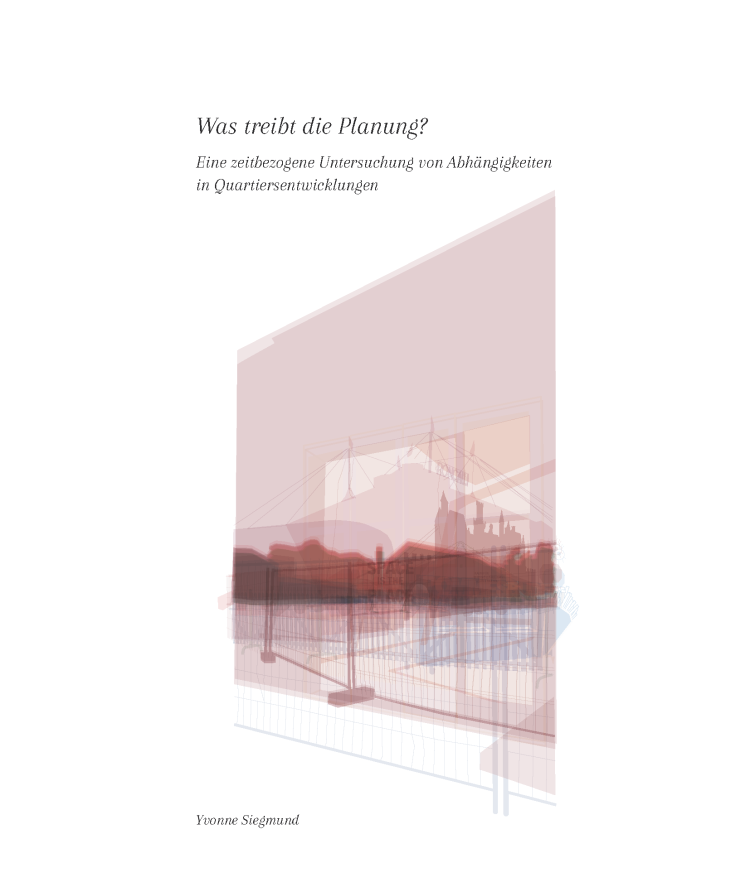
Download: https://repos.hcu-hamburg.de/handle/hcu/537
Multiscale dynamics and different needs continue to drive urban development processes. Therefore, urban planning is increasingly trying to deal with change and acceleration, with ambiguities and contradictions. Thus, urban planning focusses more on needs-based, nonlinear processes in which the temporal dimension becomes a decisive factor: Whether Rapid Planning or acceleration through the legislation, whether Cittàslow or Slow Urbanism – urban development strategies are either accelerated and goal-oriented or decelerated and process-oriented. The research-based claim asserts that contradictions are more pronounced in nonlinear processes. As a result, accelerated or decelerated developments tend to move beyond systemic boundaries, and their transgressions must be compensated on a spatial, procedural or social level.
The claim was tested on neighborhood developments that describe their characteristics as express, in the turbo, slow, decelerated or process-oriented. Spatial-programmatic characteristics, procedural features and social practices were explored more differentiated regarding temporal constraints for the first time. In addition to speed, the focus was on the influences of other temporal aspects (events, rhythms, time periods and sequences) as well as of social, spacial, instrumental Eigenzeiten (or Eigentimes).
The research path led to a triangulation with the aim of comparing characteristics, particularities and contradictions. Structural relationships were deciphered and interpreted in the abductive logic. The Grounded Theory’s controlled process involved regular fieldwork (i.e. recurring part-narrative interviews and morphological analysis) to identify changes in process, space, and perspectives of agents involved.
The path of knowledge led from an identified phenomenon to a claim and condensed into the core hypothesis (compensation – synchronization – swinging). Urban driving forces, beyond the influence of planning institutions, steered district developments decisively. Responding to them, strategies reversed development plan procedures, extended building life cycles, and exceeded legal limits. All quarters compensate for their surroundings as pressure valves or deceleration oases. And communicative and coordinating interfaces were necessary to synchronize goals and actions. The core hypothesis formulates that neighborhood developments are swinging processes in which unpredictability is seen as an opportunity to develop context-related, situational and visionary urban quarters and cities – to negotiate and juggle, to create stability and allow uncertainty, to synchronize and endure contradictions in living processes.
06.2018
New Urban Professions—A Journey through Practice and Theory
(Changing) Perspectives in Metropolitan Research 5
Michael Koch / Amelie Rost / Yvonne Siegmund / Renée Tribble / Yvonne Werner (eds.)

New urbanist fields of work?! Influencing urban development purposefully and positively can only be accomplished productively if one goes beyond traditional disciplinary boundaries. What is required therefore is a rethinking within urbanist practice.
New Urban Professions—A Journey through Practice and Theory provides exploratory discussions of phenomena, reflections and professionalization possibilities in the various fields of work. In the first section, a wide variety of practitioners are presented, who try out suitable development strategies and procedural approaches. They experiment with professional and personal competences and reassess the relationship between creativity and multiple authorship. Theoretical reflections present a variety of perspectives. Whether, to what extent, where, and how the emerging necessary competences can be taught and learnt is also a decisive factor in the long-term success of collective urban design of the future. The second part addresses this topic: what form might a sustainable exchange of experience take, what curricular consequences would appear necessary and in what roles, spaces, and spatiotemporal contexts must one prepare for the coproduction of the city?
With contributions by, among others: Renato Anelli, Anna Paula Couri, Christopher Dell, Christoph Heinemann, Bernd Kniess, Ton Matton, Michael Obrist, Klaus Overmeyer, Doina Petrescu, PlanBude, Carlo Ratti, Stefan Rettich, Tatjana Schneider, Snøhetta, Teleinternetcafe, Umschichten, Kai Vöckler, Kathrin Wildner
07.2016
Symposium: Crossing disciplinary boundaries,
New fields of work in urban design and urban research
Organizers: Studio N° 3111, HafenCity University
(Prof. Dr. Michael Koch, Amelie Rost, Yvonne Siegmund, Renée Tribble, Yvonne Werner)
http://disziplinaeregrenzgaenge.de

Zeichnung von Josef Brandl und Dominik Lang
03.2014
Rothenburgsorte. Strategies for urban peripheries.
The case Hamburg-Rothenburgort
Master Thesis in urban design at the HafenCity University

03.2008
Shrinking Cities: Twin-cities Halle-Halle/Neustadt
Diploma in architecture, focus: urban design, at the Technical University of Munich
(with Anna Reithmeier)

The old town and new city lie directly opposite on both sides of the Saale river bank. The basic idea of this work wants to strengthen the connection between the two cities by activating the three zones: The old, the new and the green buffer zone in between.
Across the river, the districts are connected by a main road, which is designed differentely as the city entrance, a main street at ground level, a high road or a bridge.
In addition to its purely pragmatic function, the street should develop into an urban element that links all of the city’s cultural and social facilities. In order to counteract the shrinking process, a slow deconstruction is planned starting from the city limits, while this main road works as an „urban magnet“ where functions are being attracted and densified.
